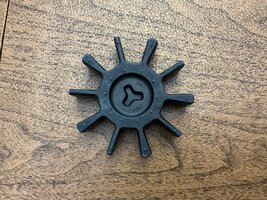afdouble
Jet Boat Junkie
- Messages
- 90
- Reaction score
- 61
- Points
- 137
- Location
- Upstate, South Carolina
- Boat Make
- Yamaha
- Year
- 2017
- Boat Model
- 242 Limited S E-Series
- Boat Length
- 24
Mates--
I'm looking for some advice. At low speeds my boat (not engine) makes a slight knocking sound while in neutral or low speeds. It is almost like a rattle, but I don't feel anything or hear anything at the throttle. It appears to be coming from the back of the boat, likely the nozzles/buckets/etc...
Additionally, the boat has always remained steady (in one place) when it starts and is in neutral. Recently, the boat tends to move forward ever so slightly (enough to notice and have a rider ask why I had throttle in forward).
I am wondering if the sound and movement are related. Has anyone else experienced this? My first inclination was to check the reverse bucket. While I have never had any experience with this issue, I have read that the reverse bucket can causes rattling/knocking. When I looked, with the throttle engaged in the first forward position, the reverse bucket clears the water outlet. I don't think this is the issue.
What am I missing? Thanks in advance.
I'm looking for some advice. At low speeds my boat (not engine) makes a slight knocking sound while in neutral or low speeds. It is almost like a rattle, but I don't feel anything or hear anything at the throttle. It appears to be coming from the back of the boat, likely the nozzles/buckets/etc...
Additionally, the boat has always remained steady (in one place) when it starts and is in neutral. Recently, the boat tends to move forward ever so slightly (enough to notice and have a rider ask why I had throttle in forward).
I am wondering if the sound and movement are related. Has anyone else experienced this? My first inclination was to check the reverse bucket. While I have never had any experience with this issue, I have read that the reverse bucket can causes rattling/knocking. When I looked, with the throttle engaged in the first forward position, the reverse bucket clears the water outlet. I don't think this is the issue.
What am I missing? Thanks in advance.

